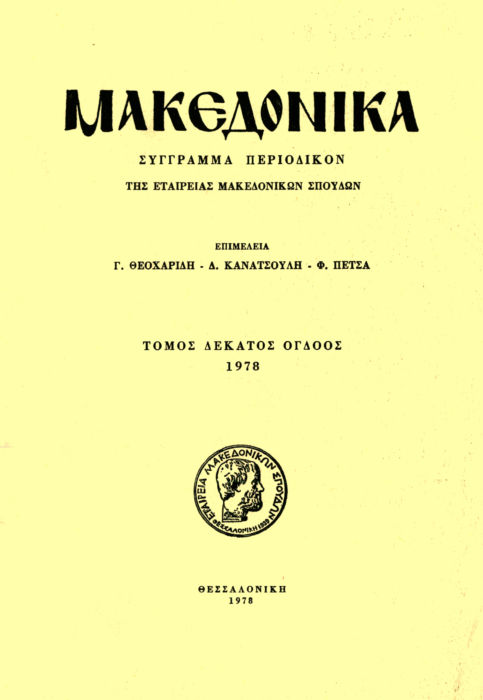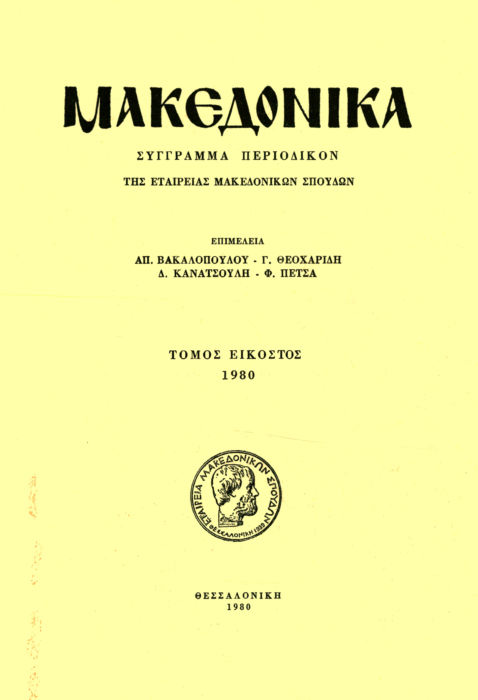Die wandmalereien der kirche der Muttergottes in Haliakmon.
Abstract
Eine kleine Kirche, ehemals Katholikon eines Klosters, das heute in Ruinensteht und dem Propheten Elias geweiht ist, wird durch eine Stifterinschrift von 1570 bewiesen, daß an die Muttergottes geweiht war. Sie ist eine holzbedeckte einschiffige Kirche des 16 Jhs. mit Wandmalereien geschmückt die im Jahre 1570 datiert werden.
Das ikonographische Programm ist sehr einfach und folgt dem bekannten Programm der spätpalaeologischen Zeit und des 16 Jhs. in Westmakedonien. Durch stilistischen Züge scheint es, daß der Maler der kleinen Kirche der Muttergottes in Haliakmon mit einen anderen Maler in der Kirche des heiligen Nikolaus des Mönches Anthimos (1565-1570) in Véroia mitgearbeitet hatte. Dieses Ereignis und die Existierung vieler Kirchen in Véroia mit Wandmalereien von 1565 bis 1598 bedeutet wahrscheinlich, daß in dieser Zeit eine Werkstatt in der Stadt existierte.
Article Details
- How to Cite
-
Παπαζώτος Θ. (1981). Die wandmalereien der kirche der Muttergottes in Haliakmon. Makedonika, 21(1), 93–108. https://doi.org/10.12681/makedonika.429
- Issue
- Vol. 21
- Section
- Articles

This work is licensed under a Creative Commons Attribution-NonCommercial-ShareAlike 4.0 International License.
Authors who publish with this journal agree to the following terms:
- Authors retain copyright and grant the journal right of first publication with the work simultaneously licensed under a Creative Commons Attribution Non-Commercial License that allows others to share the work with an acknowledgement of the work's authorship and initial publication in this journal.
- Authors are able to enter into separate, additional contractual arrangements for the non-exclusive distribution of the journal's published version of the work (e.g. post it to an institutional repository or publish it in a book), with an acknowledgement of its initial publication in this journal.
- Authors are permitted and encouraged to post their work online (preferably in institutional repositories or on their website) prior to and during the submission process, as it can lead to productive exchanges, as well as earlier and greater citation of published work (See The Effect of Open Access).










